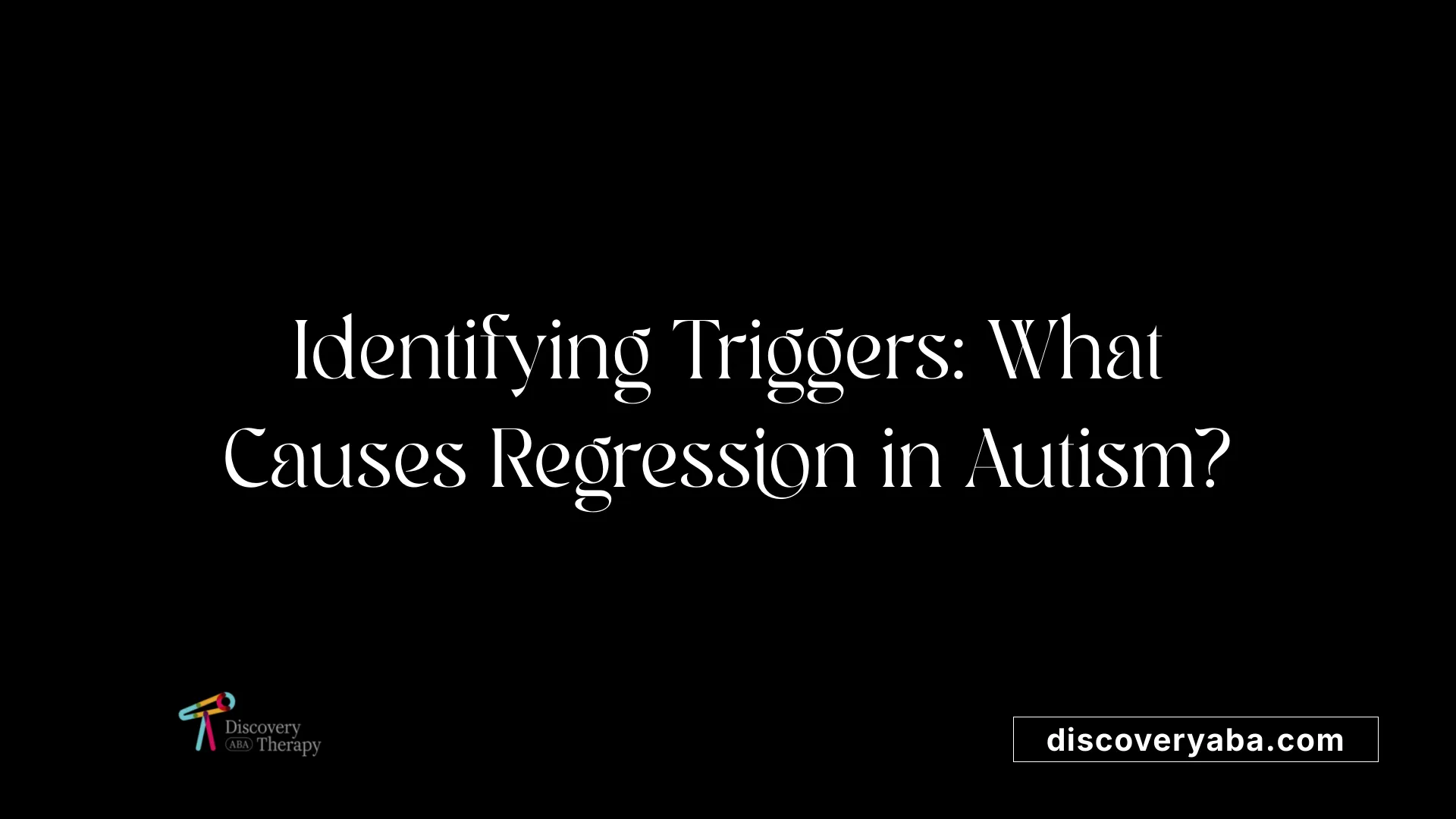How to Handle Behavioral Regression in ABA Therapy
Navigating Behavioral Regression in ABA Therapy: A Comprehensive Guide


Understanding Behavioral Regression in ABA Therapy
Behavioral regression in children with autism presents unique challenges within the context of Applied Behavior Analysis (ABA) therapy. This phenomenon involves the loss of previously acquired skills and can significantly impact a child's development. By understanding the nature, triggers, and strategies for managing regression, caregivers and professionals can facilitate continued progress in children on the autism spectrum.
Recognizing Signs and Understanding Regression

Defining autistic regression
Autistic regression refers to a loss of previously acquired skills in children with autism spectrum disorder (ASD). It can manifest as a backtracking of developmental milestones, affecting various areas including language, social interaction, and emotional regulation. This regression may occur more significantly in children with autism compared to their neurotypical peers, causing distress for families who witness these changes.
Common signs and manifestations
Signs of regression can vary widely but typically include:
- Decreased communication abilities: Children may stop using words they previously mastered or attempt to communicate less frequently.
- Social withdrawal: Loss of interest in interacting with peers or family members, leading to isolation.
- Altered emotional responses: Increased anxiety or behavioral challenges instead of clear skill loss, especially in older individuals.
Understanding these signs is crucial as they may present differently in young children versus older individuals, making recognition a challenge.
Importance of early recognition
Recognizing regression early can facilitate timely intervention, which is vital in promoting better outcomes for children with autism. Early assessment typically involves monitoring developmental milestones closely and documenting any significant changes in behavior or skills over time. With typically 20-30% of autistic children experiencing some form of regression, awareness and proactive strategies are essential.
By addressing regression immediately, parents and caregivers can collaborate with therapists and educators to create tailored support plans, ensuring the child’s developmental needs are prioritized effectively.
| Topic | Key Points | Recommendations |
|---|---|---|
| Defining autistic regression | Loss of previously acquired skills | Understand regression is not a formal diagnosis |
| Common signs and manifestations | Decreased communication, social withdrawal | Document specific behaviors for professional review |
| Importance of early recognition | Early assessment and tailored intervention | Engage with professionals for timely support |
| Trigger | Description | Outcome |
|---|---|---|
| Environmental Changes | Shifts in routine or chaotic environments can overwhelm children with ASD | Skill regression and increased anxiety |
| Stress Factors | Chronic stress events can lead to burnout and loss of skills | Emotional exhaustion and withdrawal from previously acquired skills |
| Myth Dispelling | Misconceptions about regression can lead to ineffective interventions | Inadequate support and misunderstanding of regression |
Effective Therapies for Regressive Autism
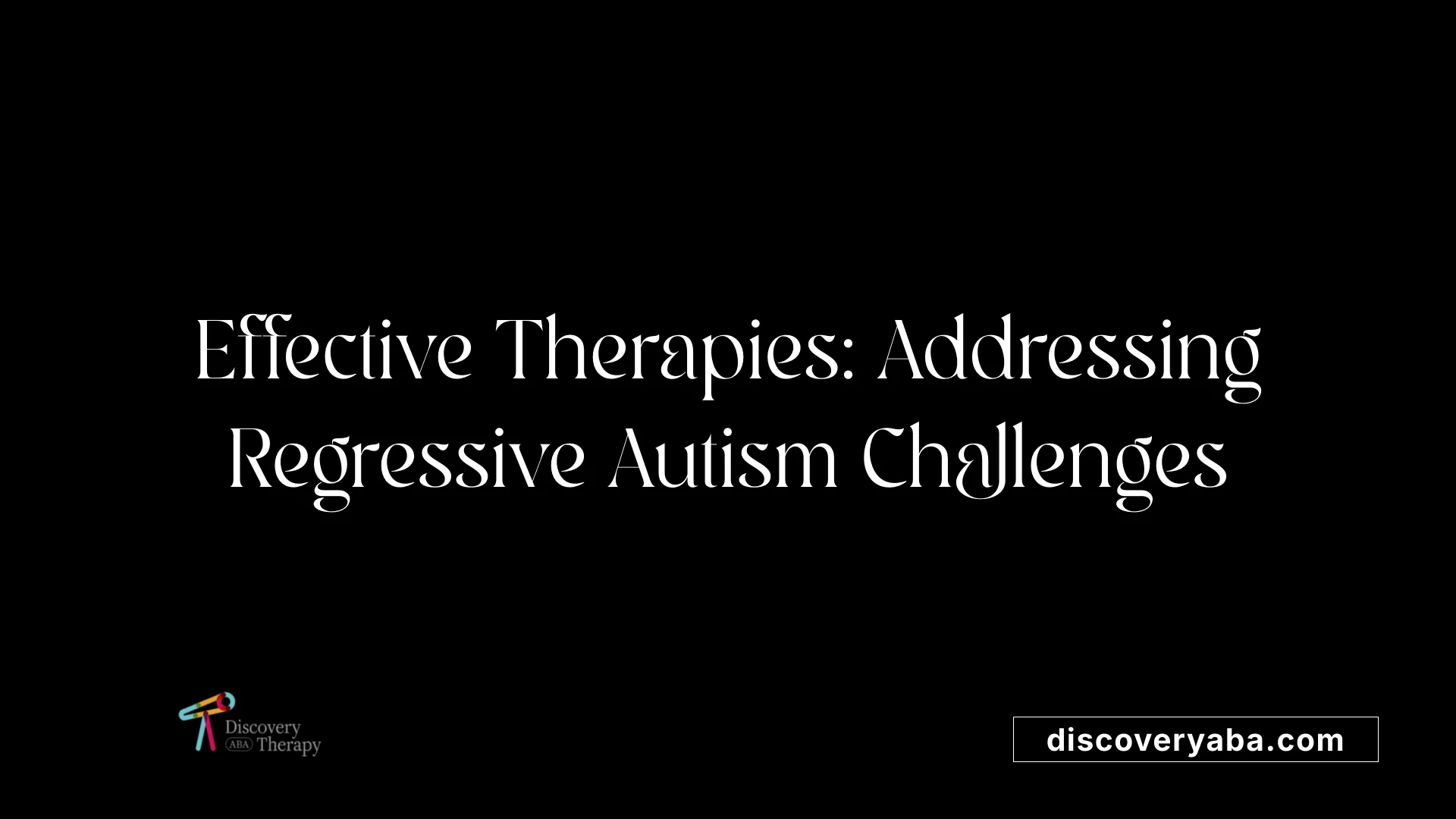
What therapies are most effective for children with regressive autism?
Regressive autism, often marked by a retreat from social interactions and a loss of language skills, typically appears between 15 to 30 months of age. It is crucial to implement effective therapies early to mitigate these challenges.
Applied Behavior Analysis (ABA) is considered the gold standard for managing regression. This structured therapeutic approach aims to reinforce positive behavior while reducing negative actions. ABA is tailored to each child's unique needs, making it highly effective, especially when treatment begins at a young age.
Additional therapies for regressive autism
In addition to ABA, several other therapeutic options are available:
- Speech Therapy: Aims to improve communication skills, helping children regain vocabulary and expressive abilities.
- Occupational Therapy: Focuses on enhancing daily living skills and can be pivotal in reacquiring lost abilities.
- Sensory Integration Therapy: Helps children manage sensory processing challenges, which can impact their social engagement and communication.
- Social Skills Training: Targets improved interaction with peers, fostering social understanding and participation.
Importance of early intervention
Research indicates that about 25-30% of children with ASD experience some form of language regression. Early intervention is critical; therapies initiated promptly can significantly alter outcomes, allowing children to recover lost skills and continue their development. Recent studies have also explored biological factors impacting regression, suggesting that ongoing research may pave the way for more advanced, tailored interventions.
Combining these therapies with regular monitoring and parental involvement ensures a supportive environment that can help children with regressive autism thrive.
The Impact of Seasonal Transitions on Regression
What impact do seasonal transitions have on autism-related behavioral regression?
Seasonal transitions can greatly influence behavioral regression in individuals on the autism spectrum. One key factor is Seasonal Affective Disorder (SAD), which may affect mood and emotional regulation. As seasons shift, especially from summer to autumn and winter, many autistic individuals show fluctuations in their emotional state, often leading to increased anxiety and behavioral challenges.
Changes in daily routines during these periods can further contribute to regression. For instance, daylight savings time alters sleep patterns, which are crucial for emotional stability. Disruption of familiar routines can trigger behavioral problems, meltdowns, or withdrawal. Additionally, environmental factors such as variations in lighting conditions may exacerbate sensory sensitivities, resulting in heightened stress or discomfort.
Managing seasonal routines
To mitigate these challenges, caregivers can implement strategies to maintain consistency. Structured activities, consistent scheduling, and early interventions—like display boards for daily plans—can support individuals during transitions.
Maintaining a balance between routine and flexibility is crucial. Regular observations can help track any behavioral shifts and allow for timely adjustments. By understanding the impact of seasonal changes, families can better anticipate difficulties and provide appropriate support to manage regression effectively.
Duration and Course of Regression in Autism
How long does regression in autism typically last?
The duration of regression in autism varies significantly among individuals. For some children, regression may last only a few days or weeks, while others may face longer-lasting challenges that extend into childhood or even adulthood. The manifestation of regression often includes a decrease in previously acquired language skills, social interactions, and emotional regulation.
What factors affect the regression course?
Several factors can influence the course of regression in autistic individuals:
- Environmental Changes: Transitioning to new settings, such as shifting schools or losing support systems, can exacerbate regression.
- Chronic Stress: Prolonged stress without coping strategies can lead to more significant regression.
- Social Interaction: Reduced opportunities for social engagement can hinder the retention of skills.
- Learning Approaches: Different learning methods may not suit all individuals, affecting their progress.
How does intervention impact the duration of regression?
Effective interventions can play a crucial role in reducing the duration of regression. Early assessment and tailored support, especially through strategies like Applied Behavior Analysis (ABA), can help children regain lost skills and enhance overall development. The response to intervention varies, but with ongoing support, many children can catch up developmentally, effectively mitigating the effects of regression.
Importance of Multidisciplinary Support in ABA Therapy
Role of diverse professionals in regression
A multidisciplinary approach in ABA therapy is vital for addressing regression in children with autism. Teams generally consist of behavior analysts, speech therapists, occupational therapists, and educators. Each professional brings unique expertise, ensuring that various aspects of a child’s development are supported. For instance, a speech therapist can target communication deficits while a behavior analyst focuses on reinforcing appropriate social behaviors.
Collaboration for tailored interventions
Collaboration among these professionals is crucial. Regular meetings can help in designing individualized intervention plans that adapt to the child's evolving needs. This cooperative effort also allows for consistent strategies to be implemented across different settings, which is essential for reinforcing learning and promoting skill acquisition.
Benefits of a team approach
The team approach not only fosters a more comprehensive understanding of each child’s needs but also helps families navigate the complexities of autism support. Parents can gain insights into their child's progress through shared observations, enabling them to contribute effectively to therapy. By working together, professionals can create well-rounded plans that mitigate regression effects, promote skill retention, and enhance overall quality of life for the child.
Effective Communication with Professionals
Discussing child's needs with educators and therapists
A fundamental aspect of managing regression in autistic children involves engaging in open and ongoing dialogue with educators and therapists. Parents should document specific behaviors and skills that have worsened, presenting this information during meetings with the school district’s Child Study Team. This helps ensure that the child's unique needs are recognized and addressed in a timely manner.
Parental role in therapy adjustments
Parents play a critical role in advocating for their child's therapy needs. Regular communication with therapists allows for the identification of necessary adjustments to the Individualized Education Program (IEP). Parents should express concerns and share observations, as their insights can significantly inform therapy strategies and adaptations.
Facilitating collaborative goal setting
Collaborative goal setting is essential for effective intervention. By working together, parents, teachers, and therapists can identify specific objectives tailored to the child's current needs. Utilizing Functional Behavior Assessment (FBA) can help understand challenging behaviors, guiding the development of appropriate interventions. This teamwork not only enhances the child's support system but also fosters improved communication skills across various contexts.
Documenting and Monitoring Regression
Tracking Behaviors and Changes
Documenting regression in children with autism involves carefully observing and recording specific behaviors and skills that have deteriorated. Parents play a pivotal role in this process. By keeping notes on language use, social interactions, and emotional responses, families create a detailed picture of their child’s development. Such records help to identify patterns or triggers related to skill loss.
Using Data for Informed Decisions
Utilizing the documented information guides discussions with educators and therapists, enabling collaborative goal-setting. The collected data offers insights into potential interventions and adaptations in therapeutic approaches. Analyzing this information can highlight areas needing immediate attention or adjustment in learning strategies.
Parental Involvement in Progress Monitoring
Parental involvement is crucial for successful progress monitoring. Engaging with professionals allows parents to share observations and concerns about their child’s regression. Studies suggest that when parents actively participate in their child's therapeutic processes, outcomes can significantly improve. Involvement fosters consistency in learning and helps maintain the developmental skills learned throughout the year, especially during transitional periods like summer breaks.
Maintaining Developmental Skills Post-Summer Break

Role of structured ABA summer programs
During summer months, many children with autism spectrum disorder (ASD) face challenges due to a lack of structured routines. Applied Behavior Analysis (ABA) summer programs serve as a crucial method for minimizing regression by maintaining skills learned during the school year. With a focus on consistent scheduling and individualized learning plans, these programs ensure that children remain engaged and continue developing their abilities.
Parental involvement during summer
Parental engagement is vital in supporting summer ABA programs. Active participation helps reinforce learning at home, ensuring that developmental progress is sustained. Parents can collaborate with therapists to integrate lessons learned in therapy into daily activities, effectively bridging the gap created by the summer break.
Adapting ABA to seasonal changes
Incorporating Natural Environment Teaching (NET) approaches, ABA therapists utilize everyday situations to teach valuable skills. This strategy not only helps generalize learning but also keeps it relevant to the child’s daily life. Furthermore, data-driven progress monitoring allows for adjustments in programming based on each child’s growth and needs, maintaining a tailored approach to learning throughout the summer months.
By implementing structured ABA programs and encouraging parental involvement, children with ASD can effectively maintain and even enhance their developmental skills during seasonal breaks.
Utilizing Natural Environment Teaching in ABA Therapy
Benefits of NET in Real-World Skill Application
Natural Environment Teaching (NET) is an integral strategy within Applied Behavior Analysis (ABA) therapy that emphasizes learning in authentic settings. By allowing children to engage in their natural surroundings, they can generalize skills more effectively. This approach helps bridge the gap between structured learning and everyday interactions, ensuring that skills acquired during therapy translate into real-life scenarios.
Incorporating Play and Outdoor Activities
Play is a fundamental part of childhood, and incorporating it into NET makes learning enjoyable. Activities in outdoor settings not only enhance engagement but also promote social skills through peer interactions. For instance, playing at a park can encourage communication and cooperation among children. This method makes learning adaptable and contextually relevant, critical for autistic children who may struggle with generalized learning across different environments.
Monitoring Progress Through Natural Interactions
Progress monitoring in NET involves analyzing how skills are applied in real-world settings. Data-driven assessments track the child's ability to use newly learned skills during everyday activities. Observing children interact spontaneously provides valuable insights, allowing therapists to tailor approaches in response to real-time behavior changes. This responsive methodology fosters continued development and reinforces the skills necessary for successful social participation.
The Role of Early Intervention in Regression Management
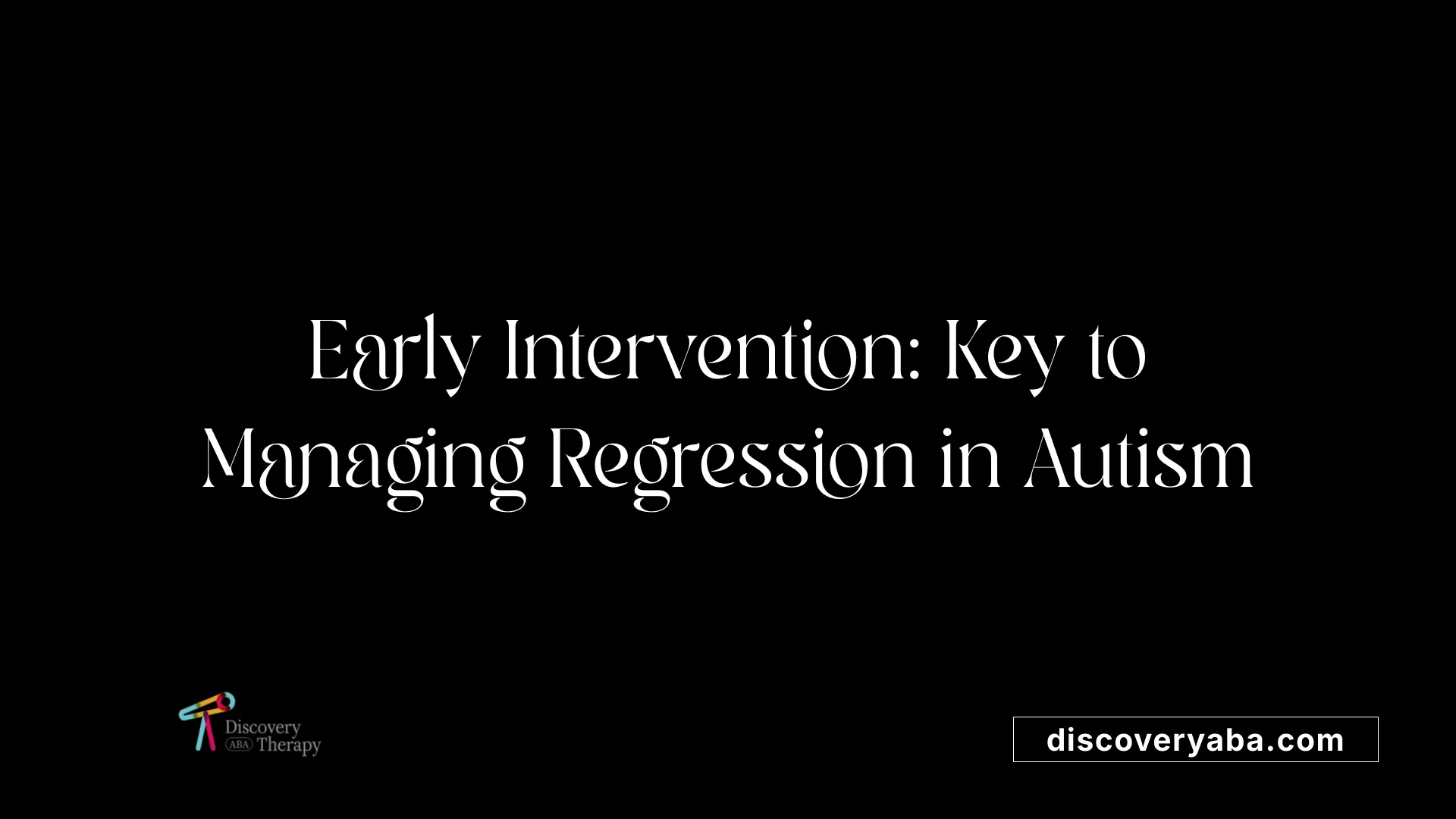
Importance of Early Assessment
Early assessment is critical for children displaying signs of regression in autism. Timely evaluations help identify specific developmental delays, allowing families and professionals to create targeted intervention strategies. Detailed observation and developmental screenings are essential in uncovering these signs as they provide data that can be crucial for determining effective support pathways.
Impact of Timely ABA Therapy
Applied Behavior Analysis (ABA) therapy is a proven approach to managing regression in children with autism. Initiating ABA early can significantly mitigate the impact of skill loss. With structured techniques, ABA helps reinforce positive behaviors while reducing negative ones. Implementing this evidence-based practice from a young age enables children to develop communication and social skills, which can be especially beneficial during challenging transitional periods, like summer breaks.
Long-Term Benefits for Children with Early Intervention
Early intervention has shown promising long-term benefits for children experiencing regression. Studies indicate that those who receive timely treatment achieve better developmental outcomes, including improved social engagement and language skills. By focusing on early support, families can help children regain lost skills and continue progressing in their development, thereby enhancing their overall quality of life.
Navigating Behavioral Regression with Insight and Support
Understanding and addressing behavioral regression in children with autism requires a comprehensive approach involving professionals and caregivers in concert. Through early intervention, multidisciplinary collaboration, and consistent therapeutic application, ABA therapy can mitigate the challenges presented by regression. By equipping families and practitioners with effective strategies, the goal is to ensure children on the autism spectrum continue to develop positively and reach their fullest potential despite the obstacles regression may present.
References
- Regression in Autism: Signs, Causes, and Support - Healthline
- Regression and What You Can Do About It - Autism NJ
- What to Do When Your Autistic Child Regresses - Heartlinks ABA
- How Summer ABA Therapy Programs Prevent Regression with Autism
- Regressive Autism – Why It Occurs
- Perspective on new findings on regression in autism
- Regression in Autism: Signs, Causes, and Support - Healthline
- Regression in autism: Signs, causes, and support
Find More Articles

Social Connections And Autism

What is Tactile Defensiveness?
.jpeg)
Sibling Relationships and Autism
.jpeg)
Trigger Analysis in ABA: Definition & Examples
.jpeg)
Telomere and Autism: Ultimate Guide

Smart People with Autism

Sleep Solutions For Autism

Uncovering Signs Of Autism In Babies
.jpeg)
Stimulus Equivalence In ABA

Vocational Opportunities For Individuals With Autism

Stimulus Control Transfer In ABA

Technology for Autism Support
.jpeg)
Sensory Seeking And Sensory Avoiding

Visual Stimming Treatment Strategies
.jpeg)
Token Economy: Examples and Applications

Exploring the Benefits of a Sensory Table for Autism

5 Best Sports for Kids With Autism

Support Network for Autism

Visual Supports in Autism

Key Questions to Ask About ABA Therapy

Serotonin And Autism: Decoding The Correlation

Speech Therapy as a Key Component in Autism Treatment

Proprioception and Autism

Raising A Child With Autism: Parenting Tips

Stimming without Autism: The Art of Self-Soothing
.jpeg)
Respondent Conditioning: Examples and Properties

Toddler Blinking A Lot Autism

Suforaphane Autism: Unlocking The Potential

Supporting Motor Skills in Autism

Tips For Parents Navigating The Unknown In Autism
.webp)
Vitamins and Autism: The Best Vitamins for Autism

Virtual Reality Therapy

Tennessee Autism Resources

Rigid Thinking in Autism
%2520(1).jpeg)
Vaccinated and Unvaccinated Children Can Have Autism

Vitamin D and Autism: Is There A Connection?

The Purpose and Benefits of ABA Therapy
.jpeg)
The Visual Schedule For Students With Autism

Self-Help Skills in Autism

Exploring Disorders Like Autism

Effective Strategies for Children with Autism

Repetitive Behaviors And Autism: Managing And Channeling

Picture Exchange Communication System (PECS)

Potty Training For Autism
%2520(1).jpeg)
The ABCs of Autism Education: Ultimate Guide for Parents

Variable Ratio Schedule and Examples Unleashed

Sensory Table Ideas for Autism Exploration

Social Stories and Autism Connection

Pervasive Developmental Disorder
%2520(1).jpeg)
PDA Profile In Autism

Right School for Autism
.jpeg)
Shy Child Vs. Autism

Positive Reinforcement: Definition, Examples & More

Peer Relationships in Autism

Peer-Mediated Instruction in Autism

How To Prevent Autism: Can Autism Be Prevented?

Tylenol and Autism Study Demystified

Can ABA Therapy Cause Trauma?
.jpeg)
Scatterplot In ABA

Social Validity In ABA
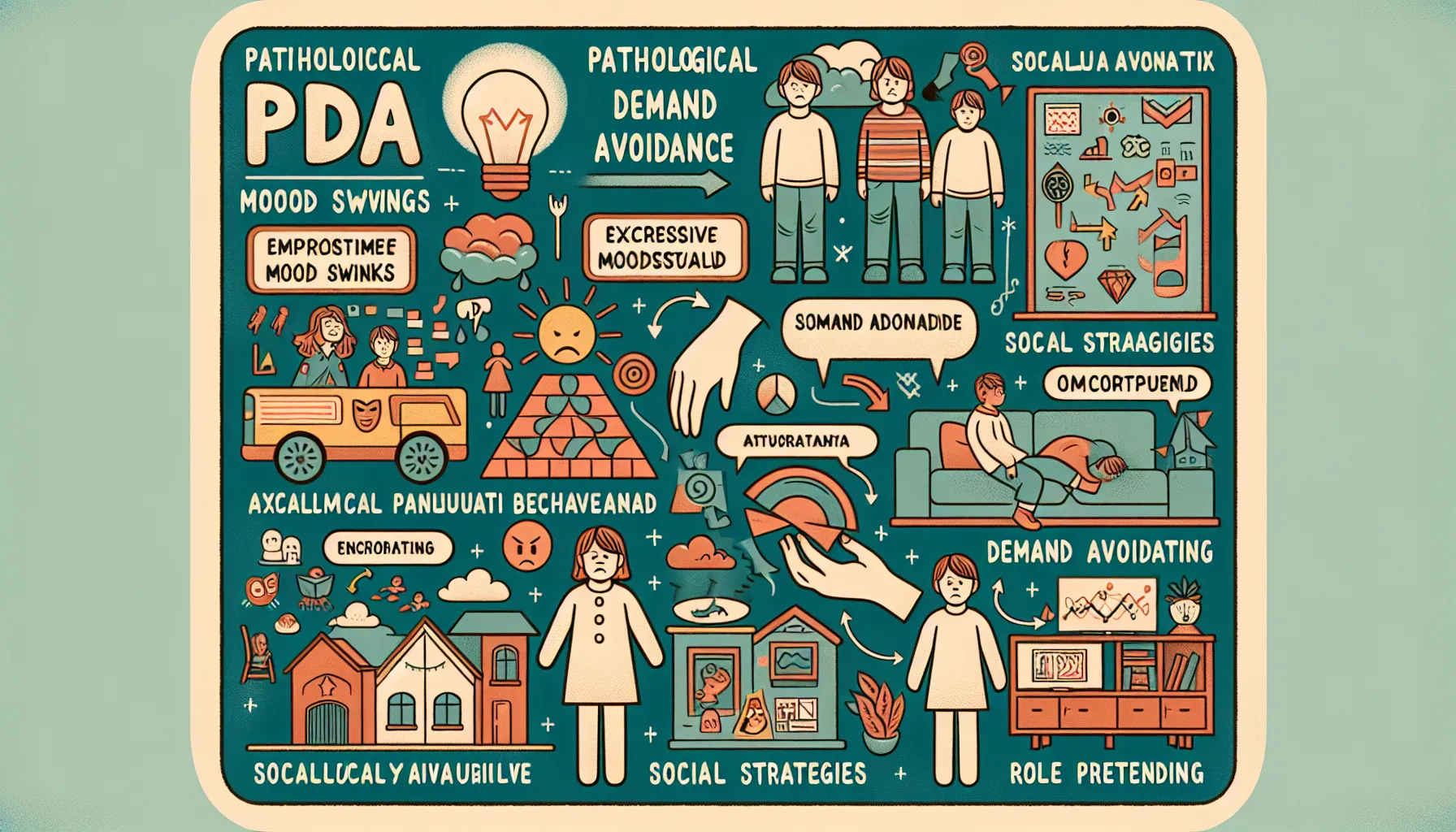
Beyond the Surface: Delving into PDA Autism Symptoms
.jpeg)
PDA Autism Meaning: What is it?

How Much Do ABA Therapists Make in New Jersey?
%2520(1).jpeg)
Pda Autism: Unlocking Potential

Proprioception Autism Examples

Supporting Executive Functioning in Autism

Understanding Phenomenon Immunity In Autism

Occupational Therapy in Autism
.jpeg)
School Inclusion and Autistic Children

Unraveling the Meaning of Neurotypical
%2520(1).jpeg)
Recreational Opportunities for Autism

The Best Toys for Autism: Embracing Sensory Diversity

Pivotal Response Treatment (prt) In Aba Therapy
.webp)
Sleep And Gut Health To Autism Behaviors

Key Tips for Parenting a Child with Autism

Risperidone for Autism: Does it Work?

Preparing for a New Sibling with Autism

Screen Time in Autism

Rejection Sensitive Dysphoria in Autism

Response Cost In Aba Therapy

Revealing Symptoms of Autism in Adult Women

Misophonia and Autism Spectrum Disorders

Nevada Autism Resources
%2520(1).jpeg)
Sensory Diet: Definitions and Examples

Sibling Perspective On Autism
%2520(1).jpeg)
Precision Teaching In Aba
.jpeg)
Self-Care For Autism Parents
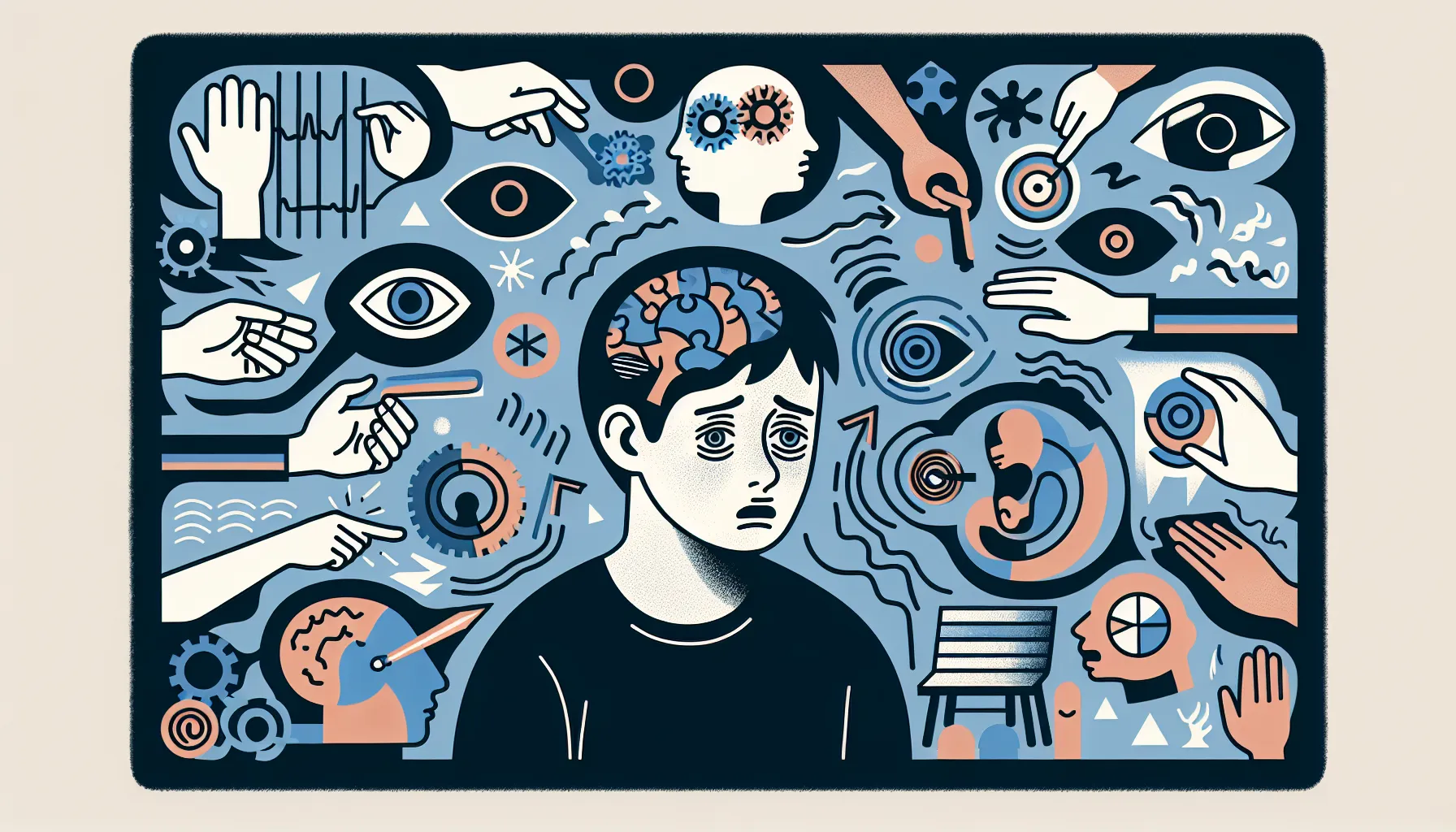
Unraveling Profound Autism Symptoms

ABA Therapy Pros & Cons: What You Should Know

Demystifying Profound Autism Life Expectancy

Preparing for Travel with Autism
%2520(1).jpeg)
Managing Sensory Sensitivities In Autism

Does Medicaid Cover ABA Therapy In Nevada?
.jpeg)
Naturalistic Teaching Strategies in ABA: How They Work?

Is Aspergers Syndrome a True Learning Disability?

How Many Adults with Autism Live Independently?

Lead Exposure, Fevers During Pregnancy Can Lead To Autism
.jpeg)
Legal Advocacy for Autism: Ultimate Guide

How To Deal With Sibling Rivalry And Autism?
.jpeg)
How To Talk About Autism
Contact us
North Carolina, Tennessee, Nevada, New Jersey, Utah, Virginia
New Hampshire, Maine
Massachusetts, Indiana, Arizona, Georgia
.avif)

